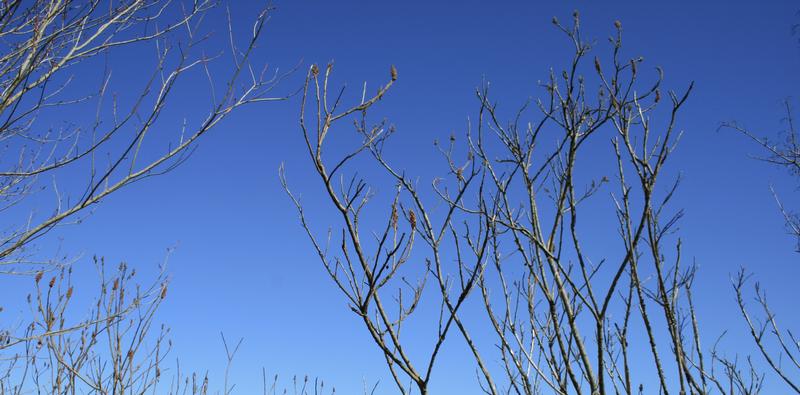Seeds of Hope
We’ve been hearing the word “ruderal” thrown around a lot lately. Ruderal plants are the rough-and-tumble baddies that take over in some unlikely circumstances: disturbed roadsides, slopes, poor soil conditions, drought-prone areas, burn sites, etc. You name a difficult growing situation, and there’s a ruderal plant ready to take charge.
Able to thrive on neglect and adversity, ruderal plants are something us human beings can take note from. They are resilient even when resiliency doesn’t seem possible. Tough, no-nonsense, and willing to inhabit spaces that other plants are unable to make an effort in, the ruderal species are the pioneers of landscape restoration.
One such species, Rhus glabra, is an evident roadside companion throughout the Mid-Atlantic and Northeastern corridor. Juvenile trees with their gangly, skyward branches create rudimentary communities overlooking the Pennsylvania Turnpike: hindering slanted and often nutrient-poor soils from becoming active landslides into roadways and valleys; setting seed by their abundant (and edible!) fruits for future smooth sumac generations to take root. Smooth sumac has been studied as a pioneer species and has been effectively revered for its fire tolerance. Both controlled and uncontrolled burns result in an increase of smooth sumac post-event, encouraging it to spread via rhizome and with more densely packed coverage per square foot. Even in the most unlikely of circumstances, Rhus glabra survives, and does so spectacularly.
These plants thrive in the wild, adapting to whatever comes their way, much like us. They provide not only sustenance but also shelter to countless creatures, playing a crucial role in our ecosystems. Their ability to care for themselves and, by extension, for the world around them, is a powerful testament to the resilience of life.
As horticulturists, we do more than just cultivate plants; we cultivate hope, growth, and renewal. Each seed planted, each landscape designed, is not merely an act of gardening—it's an act of faith in the future. We are the stewards of these living artworks, and through our work, we provide a sanctuary not only for our flora and fauna but also for our spirits and the spirits of future generations.
Like the artists you are, I implore you to get creative with your leafy companions in ways that you’re least expecting. Nature has abundant resources for dyes and pigments, medicines, textiles and fabrics, foods, sculptures, structures, and shelters crafted out of plant material. Figuring out ways to utilize these available resources embellishes a deeper understanding and connection to the plants that produce them, and ties us ancestrally to the bygone explorers, artisans, healers, and architects of yesteryear.
Rhus glabra has a curious and lengthy history as an artists’ tool: its pliable branches have been a favorite of the Ute people for weaving ceremonial baskets, while the Navajo created multiple shades of dyes from fermented berries, ranging from burnt orange to a sultry, deep red. Yellow pigments have been extracted from the roots and pulverized stems, while the medicinal (yet slightly poisonous) tannins in the leaves are known to produce a richer brown pigment. I’ll be using this weekend to attempt gathering pigment from three sets of smooth sumac berries, each gathered at different locations and stages of maturity. Check back in next week to see how it went, if anything happened, and if I managed to squeeze in the time to create something with it!
Let us continue to find joy and purpose in our work. Remember, like the plants we cherish, we possess the strength to adapt and the capacity to thrive, no matter the circumstances. Together, let's keep planting seeds of hope and beauty in every patch of earth we touch. Every seed planted is a testament of hope for the future.

Rhus glabra

